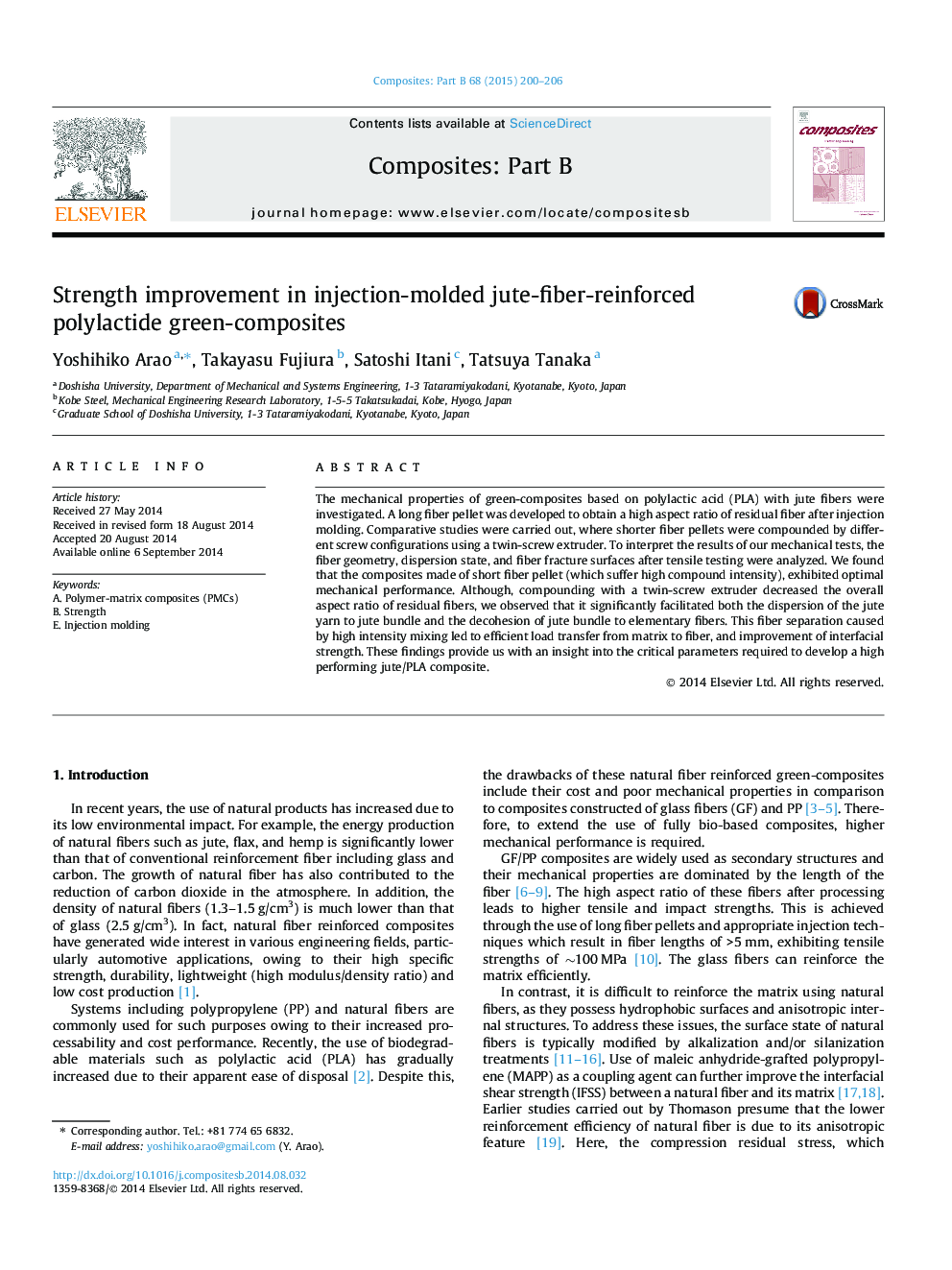| Article ID | Journal | Published Year | Pages | File Type |
|---|---|---|---|---|
| 7213237 | Composites Part B: Engineering | 2015 | 7 Pages |
Abstract
The mechanical properties of green-composites based on polylactic acid (PLA) with jute fibers were investigated. A long fiber pellet was developed to obtain a high aspect ratio of residual fiber after injection molding. Comparative studies were carried out, where shorter fiber pellets were compounded by different screw configurations using a twin-screw extruder. To interpret the results of our mechanical tests, the fiber geometry, dispersion state, and fiber fracture surfaces after tensile testing were analyzed. We found that the composites made of short fiber pellet (which suffer high compound intensity), exhibited optimal mechanical performance. Although, compounding with a twin-screw extruder decreased the overall aspect ratio of residual fibers, we observed that it significantly facilitated both the dispersion of the jute yarn to jute bundle and the decohesion of jute bundle to elementary fibers. This fiber separation caused by high intensity mixing led to efficient load transfer from matrix to fiber, and improvement of interfacial strength. These findings provide us with an insight into the critical parameters required to develop a high performing jute/PLA composite.
Related Topics
Physical Sciences and Engineering
Engineering
Engineering (General)
Authors
Yoshihiko Arao, Takayasu Fujiura, Satoshi Itani, Tatsuya Tanaka,
